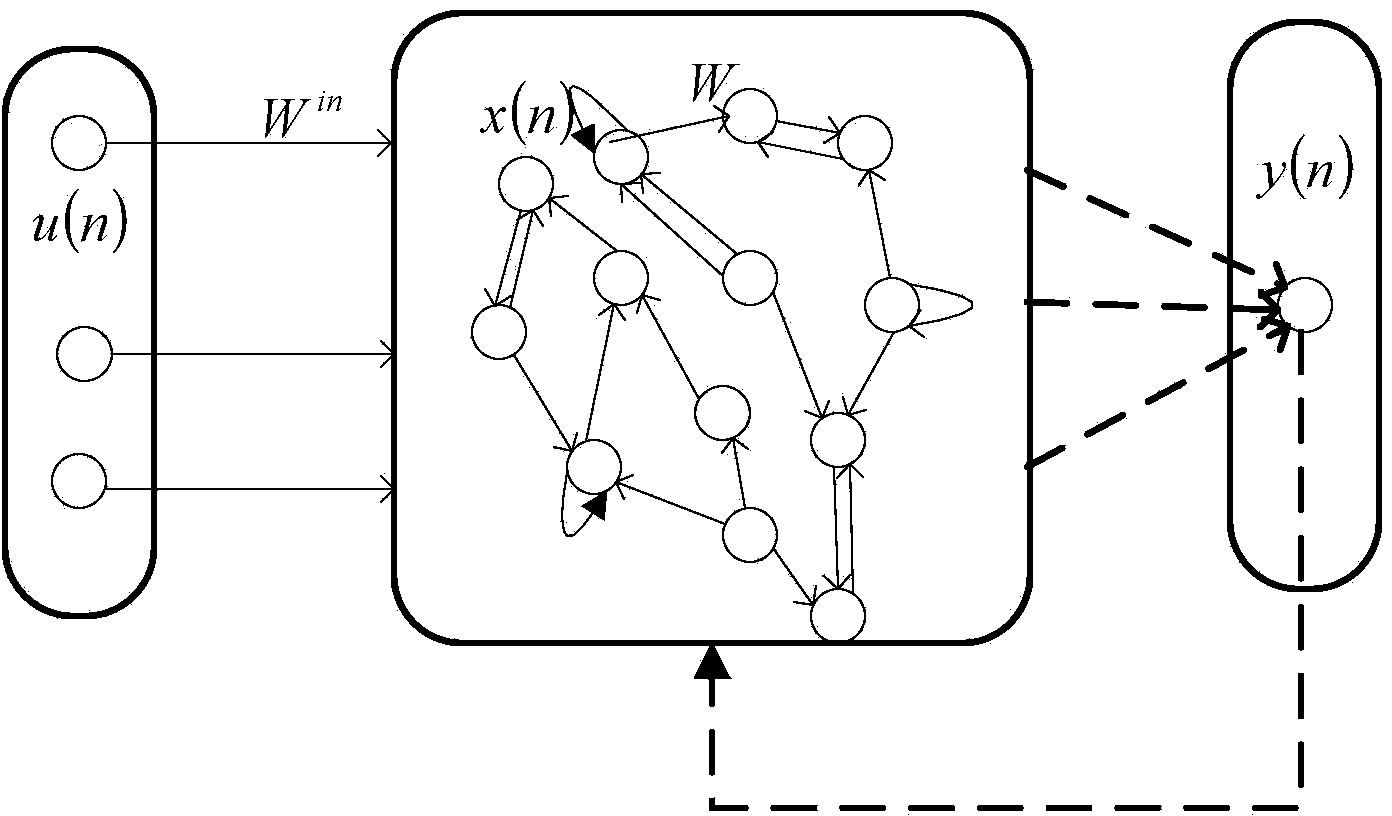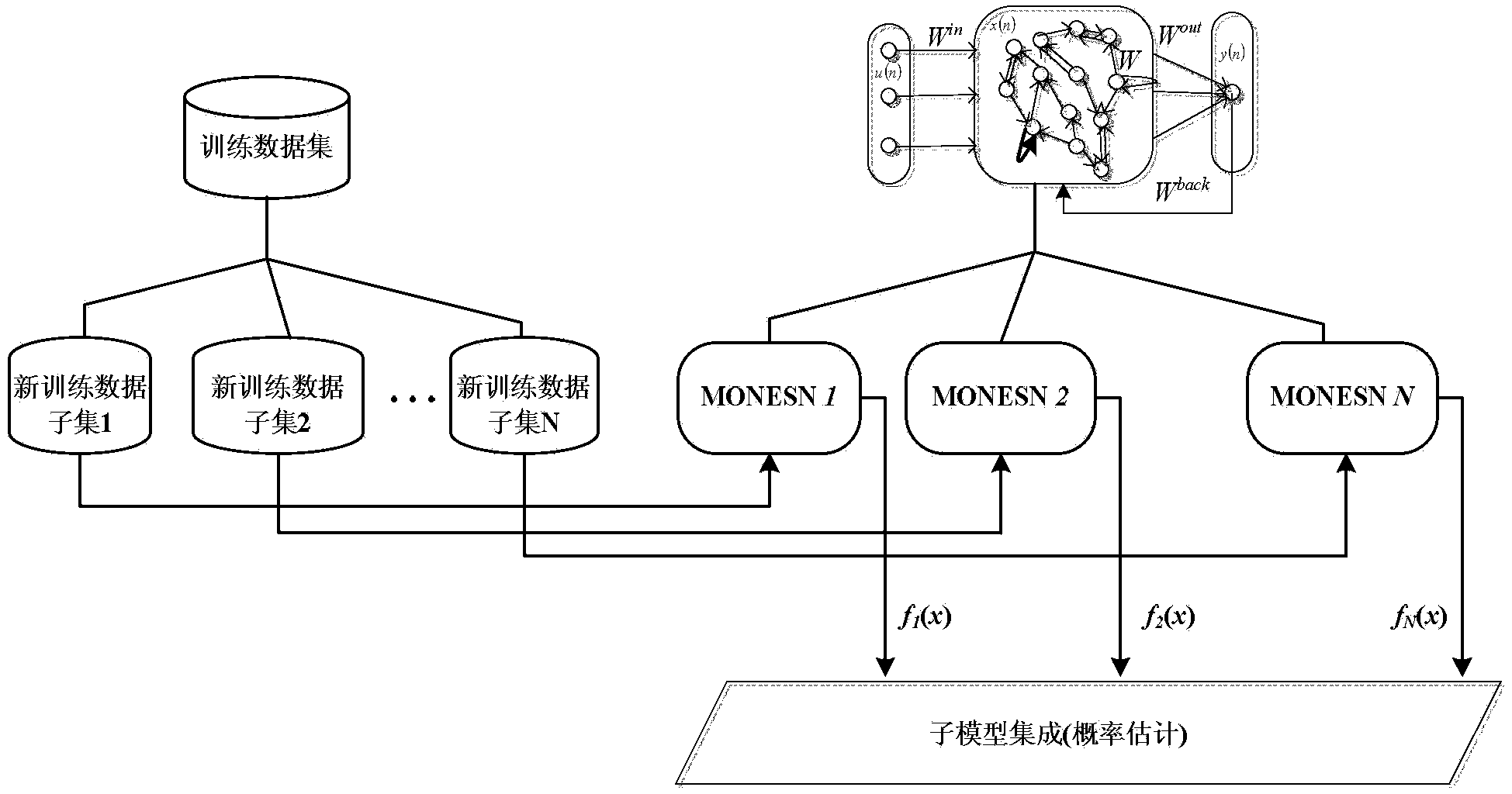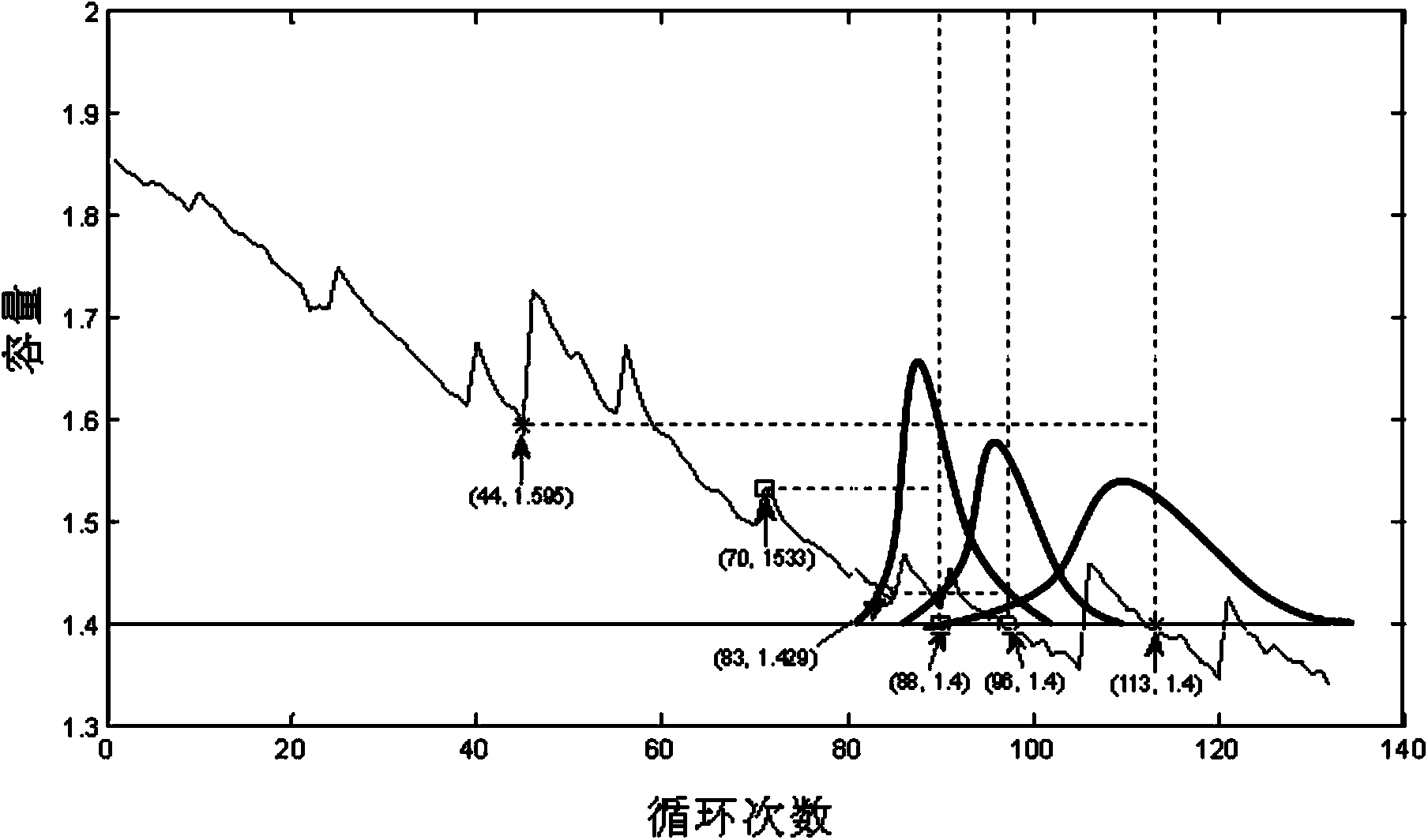Lithium ion battery remaining life direct prediction method based on probability integration
A lithium-ion battery, life prediction technology, applied in the direction of measuring electricity, measuring devices, measuring electrical variables, etc., can solve the problem of lack of remaining life uncertainty, instability, etc., achieve scientific maintenance decision-making reference, overcome instability. Effect
- Summary
- Abstract
- Description
- Claims
- Application Information
AI Technical Summary
Problems solved by technology
Method used
Image
Examples
specific Embodiment approach 1
[0065] Specific implementation mode one: combine figure 1 To illustrate this embodiment, the method for directly predicting the remaining life of a lithium-ion battery based on probability integration described in this embodiment includes the following steps:
[0066] Step 1. Measure the lithium-ion battery capacity to obtain the lithium-ion battery capacity data sequence;
[0067] Step 2, using the lithium-ion battery capacity data sequence in step 1, using N monotone echo state network models MONESN to predict the remaining life of lithium-ion batteries, and obtaining the prediction results of the remaining life of N lithium-ion batteries; N is a positive integer;
[0068] Step 3: Estimating the uncertainty interval of the remaining life prediction result of the lithium-ion battery, and obtaining the prediction result of the remaining life of the lithium-ion battery based on probability integration.
[0069] In this embodiment, N monotone echo state models are used to predi...
specific Embodiment approach 2
[0077] Specific implementation mode two: combination figure 2 Describe this embodiment. This embodiment is a further limitation of the method for directly predicting the remaining life of a lithium-ion battery based on probability integration described in Embodiment 1. In this embodiment, the prediction result of the remaining life of a lithium-ion battery described in step 3 The method to estimate the uncertainty interval is as follows:
[0078] The remaining life prediction results of N lithium-ion batteries in step 2 are output as a sub-model, and the output data of the sub-model obeys the Weibull distribution, and its probability density function is:
[0079] g ( f ) = β η β f β - 1 e - ( ...
specific Embodiment approach 3
[0085] Specific implementation mode three: combination image 3 and Figure 4 This embodiment is described. This embodiment verifies the method for directly predicting the remaining life of a lithium-ion battery based on probabilistic integration described in Embodiments 1 and 2.
[0086] Li-ion battery dataset:
[0087] Two types of Li-ion battery datasets are used for method validation. The operation and test conditions of the two types of data sets are different, including different types of battery samples to ensure the validity of the method verification.
[0088] The first type of data set comes from the NASA PCoE laboratory. The test object sample is a commercial 18650 lithium-ion battery with a rated capacity of 2Ah. The battery experiments (charging, discharging and impedance measurement) are run at room temperature (25°C). 1) Charge in a constant current mode of 1.5A until the battery voltage reaches 4.2V; 2) Discharge in a constant current mode of 2A until the ba...
PUM
 Login to View More
Login to View More Abstract
Description
Claims
Application Information
 Login to View More
Login to View More - R&D Engineer
- R&D Manager
- IP Professional
- Industry Leading Data Capabilities
- Powerful AI technology
- Patent DNA Extraction
Browse by: Latest US Patents, China's latest patents, Technical Efficacy Thesaurus, Application Domain, Technology Topic, Popular Technical Reports.
© 2024 PatSnap. All rights reserved.Legal|Privacy policy|Modern Slavery Act Transparency Statement|Sitemap|About US| Contact US: help@patsnap.com










